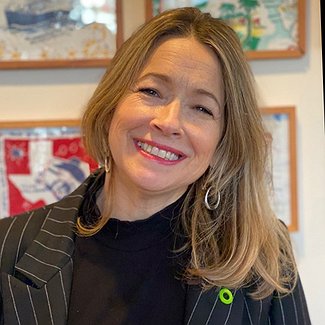INDUSTRY FOCUS: TRACEABILITY
Taking the First Steps in Creating Traceability in an Apparel Business
Many well-meaning apparel professionals want to create a more ecological fashion business, yet solving one of the biggest obstacles doesn’t rest solely on the shoulders of a business owner. Creating traceability within a business’s supply chain can seem to be an overwhelming task when starting out on a sustainable journey.
When transitioning toward a greener business, traceability is one of most important aspects of the sustainable equation as it allows every partner along the supply chain to contribute substantially toward environmental health. Traceability also allows brands to proclaim themselves as more authentic in terms of ecological commitment to consumers.
With this in mind, California Apparel News asked ecological leaders: As conversations covering fashion sustainability focus on the origin and life cycle of goods, from farm to closet, how can a brand of any size or designer of any experience level take the first steps toward implementing traceability?
Dr. Gary Adams
President, Board of Directors, U.S. Cotton Trust Protocol
President, National Cotton Council
Traceability ensures compliance with sustainability standards, ethical labor practices and responsible sourcing, helping to combat a wide range of issues. Moreover, traceability empowers consumers to make informed choices, enabling them to support brands that align with their values. Ultimately, traceability enhances trust, fosters sustainability and drives positive change throughout the fashion industry.
A way that brands and retailers can take the first steps toward implementing traceability is by joining programs that provide data on materials in their supply chain. One of these programs is the U.S. Cotton Trust Protocol, which provides brands and retailers a traceability solution to track the progress of raw materials in the supply chain, in this case, cotton. For the Trust Protocol, this process starts once the cotton fiber is ginned and each cotton bale’s unique PBI number and gin weight are captured and verified against a USDA master list for authenticity and nonduplication. Once verified, a digital token, called a Protocol Consumption Unit, is minted for each kilogram of Protocol Cotton fiber.
When the Protocol Cotton is tracked through the Protocol Consumption Management Solution, brands and retailers receive a transparency map that verifies the origin of the cotton starting from the initial fiber shipment to a textile mill, providing the names and locations of the Trust Protocol mill and manufacturer members involved at every stage of the production process until the delivery of finished products. This provides enhanced claims opportunities, including the ability to incorporate proportionate environmental data into marketing claims and on-product labels.
Kerry Bannigan
Executive Director
Fashion Impact Fund
In the fashion industry, traceability is crucial for promoting environmental and social responsibility. Educating yourself about these issues and understanding their impact is the first step toward positive change. Researching your brand’s actions and their consequences will lay a solid foundation for improvement and implementation. Make sure to map out your supply chain, identifying all stakeholders involved, from raw-material suppliers to distributors. Knowing the origin of each garment component and the production conditions will help identify areas for enhancement.
Engaging with your suppliers and partners is essential in establishing a relationship based on transparency and ethical practices. Encourage responsible production methods and gather information about their sourcing and labor practices. Collaboration and open communication ensure everyone works toward ethical manufacturing. Additionally, developing a comprehensive code of conduct that outlines the standards you expect from all stakeholders, including fair wages, safe working conditions and respect for labor rights, will provide clear expectations and guidelines for partners and suppliers.
Implementing traceability requires resources and commitment. It may take time to establish an effective system, but the effort will contribute to a more responsible and ethical fashion industry, benefiting your brand, the planet and the garment workers involved.
Matthew Betcher
Creative Director
ALLIED Feather + Down
The most important thing that any brand or designer, big or small, can do is truly understand their entire supply chain. Part of this is working with reputable and trusted ingredient brands and suppliers at all levels.
Several years ago, all the talk was around the subcontracting of manufacturing and the resulting human-rights crisis. In some way, nothing has changed. A designer or brand needs to have a high level of commitment to research all materials and materials suppliers. Do not just take a vendor’s word for it. Do the homework, meet your suppliers or sources, and develop relationships.
Brands need to trust those suppliers and relationships as they provide a huge value. When the unexpected happens, strong relationships are worth their weight in gold. But too many times sourcing decisions are made by what I like to call “spreadsheet terrorists” whose sole job is to crunch numbers and save pennies. It is truly a case of pinching pennies in the short term only to spend pounds in the long run. When problems arise, the brand without meaningful, mutually beneficial relationships is left to fend for themselves.
Only when brands and designers truly value the importance of trusted sourcing relationships can we really dive into the details of quantifying true carbon footprints, complete transparency and general traceability.
True sustainability for brands—in all senses of the word—lies first and foremost in the strength of relationships with their suppliers and less on ambiguous impact numbers generated by arbitrary indices and over-simplified certifications. Brands that value relationships will be better able to communicate authentically to their customers and actually do the work toward building a more equitable future.
Katrina Caspelich
CMO
ReMake
Regardless of brand size or experience level, step one is to set clear goals and define what it is you want to achieve with traceability. Identify the specific aspects in your supply chain that you want to trace such as raw-materials sourcing, transportation and manufacturing processes.
From there, map out your supply chain, making sure to include all suppliers and subcontractors involved in the production process. Encouraging suppliers to share information is key when implementing traceability, so prioritize working with suppliers who share your commitment to sustainability. Credible certifications and standards related to sustainability in fashion like Cradle to Cradle or OEKO-Tex can also help guide your efforts and provide some credibility.
Like most things in life, collaboration is key. Collaborate not only with suppliers but also with industry peers, sustainability experts and consultants who can share knowledge and best practices as well as help you navigate the complexities of traceability. Educating yourself and your team to ensure that everyone in your company understands why traceability is important to the brand is crucial in embedding sustainability into your company’s practices. In my experience, training and raising awareness among employees has led to more-effective implementation.
Be honest about the obstacles you’re facing and the progress being made. Implementing traceability can be challenging, especially for smaller brands with limited resources. Remember that these things can take time and that regularly reassessing your practices as well as setting new goals leads to continuous improvement. Finally, remember to share information about your progress with your customers as it can build trust and loyalty.
Thomasine Dolan
Director, Materials Innovation & Design
Material Innovation Initiative
The more brands and designers that make traceability a deal breaker for purchasing materials, the greater chance we have for transparency and sustainability within the supply chain.
That being said, traceability will add extra steps in order for suppliers to do proper accounting. It will slow things down and add cost. Brands should be prepared for this.
We also know that within the supply chains for animal-derived fibers and materials there have been disputed claims with regard to safety and animal welfare, despite certifications claiming otherwise. This can be tricky. For these reasons, the next-gen materials industry is poised to be significantly more traceable as the supply chains are generally shorter. Traceability is baked into their products. They have built their supply chains to be sustainable, safe and renewable. They are developing materials with life cycle in mind. Ultimately, these next-gen materials are poised to be more environmentally preferred than animal-based materials.
Lastly, traceability should not end after choosing the material. Brands need to execute due diligence with their manufacturers to make sure the factories are energy efficient, have reduced carbon emissions and the workers are paid fairly with safe, decent working conditions.
Stacy Flynn
Co-founder and Chief Executive Officer
Evrnu
Due to the myriad components that need to be addressed to qualify and trace sustainably oriented goods, from fiber selection to designing for disassembly and everything in between, most brands do not have the internal expertise needed to implement robust circular programs with meaningful impact.
In addition, due to the fragmentation of supply chains, individual point solutions only serve to address portions of this multifaceted issue versus providing a holistic solution. There are, however, companies like ours that have expertise at each stage of the process, from implementing recycling take-back programs through sustainable garment design, inclusive of chain-of-custody tracking, which can provide brands large and small with the strategic and tactical guidance and tools needed to confidently and successfully navigate this complex subject.
Karri Ann Frerichs
Founder and Chief Executive Officer
Circular Fashion LA
Ask questions, seek proof, and never assume. With about 70 percent of all clothes today being made from synthetic materials, the journey is less seldom farm to closet and more likely lab to closet. But even if manufactured in the lab, the raw materials still originate in nature. If you aren’t able to visit your suppliers and/or are unable to obtain full disclosure of material sourcing, then rely on third-party auditors and certifications.
The location of origin and the labor involved in getting raw materials to your suppliers is equally as important to consider as whether or not the materials are considered organic or fair trade. For example, does it make sense to source cotton from India and then have it shipped to China to be spun and woven into the fabric that will be shipped to Bangladesh to be cut and sewn into garments before shipping it to the U.S. to be sold as fast fashion? For this to actually make sense economically, there is no other option than to squeeze and exploit the laborers involved in each step. Sourcing more locally to reduce shipping distances and have a better grasp of labor required is the more sustainable choice.
Jordana Guimarães
Co-founder
Fashinnovation
For me it’s so much more than traceability, it’s really about sharing the full story of the garment to educate consumers on sustainability but also to engage them in the brand—to have the connection. All the technologies and resources are today made available to track from the cotton farm to the product. It’s just wanting to take the time and invest in the right resources to ensure you can trace the supply chain. Great companies like Deda Stealth play a huge role in this.
Del Hudson
EVP, Market Impact
Worldly
Today, many consumers want to know more than just what’s in a product—88 percent seek to buy from companies with sustainability embedded throughout their value chains. Beyond consumer demand, all indications show that market and regulatory pressure will continue to push toward authentic transparency and traceability. Businesses need to prepare for upcoming regulations, from the New York Fashion Acts to the U.S. SEC Climate Disclosure Act pending legislation in California and the E.U. Corporate Sustainability Reporting Directive. Most businesses in major markets will eventually have to comply with environmental, social and governance policies—the majority of which will require businesses to clearly communicate product and supply-chain sustainability metrics.
EU Due Diligence, the French Labeling law and Digital Product Passports will require that businesses be prepared to track and disclose the provenance of products up and down their value chains.
At its core, traceability relies on a three-legged stool of data capture, data integrity and effective data exchange and disclosure mechanisms. Traceability of products, down to the fiber level and accounting for workers’ well-being, have emerged as requirements for upcoming regulations, particularly in the E.U.
To address traceability effectively, brands need visibility into their value chain beyond tiers 1 and 2, and disaggregated supply chains in the fashion industry make this complex. Smart technologies will be a critical enabler to gathering and disclosing traceability data, but today, none of the promising traceability solutions are close to scaling.
Eddie Ingle
CEO
Unifi Manufacturing, Inc.—REPREVE
Traceability extends beyond individuals and brands to their full network of partners. An important step in ensuring a sustainable product life cycle is working with inputs that have certifiable qualifications and affirmative data as backers.
For example, on July 26, REPREVE released peer-reviewed LCA findings showing the environmental benefits of choosing REPREVE polyester over virgin polyester. These data can help partner companies to track their own sustainability goals and share verified progress updates with customers about their products.
REPREVE also uniquely offers U TRUST Product Certification that allows brands to obtain an additional level of transparency for their products made with REPREVE recycled fibers.
Jessica Kelly
Founder and Chief Executive Officer
Thr3efold
When it comes to traceability, the great news is that the smaller your brand is the better. The best first steps to take are visiting your suppliers early and often. Make them an extension of your team and family. Get to know the full staff on the floor, and do the same with the textile mill, dye house or anywhere else that they source. This gives you much more confidence when tracking and making visible your supply chain.
For bigger brands, your supply chain is much harder to foster those intimate relationships, so I recommend investing in traceability software so you can keep tabs on where your product is. As far as transparency of these efforts, here’s my advice: Even better then just publicly posting your supply chain, include a grading system. Most people will not be able to decipher the standards of your factory even if they try, which can lead to further frustration. Instead, set a grading system and what that entails so the customer can see what they are actually looking for—standards.
Andrea Kennedy
Lead Faculty of Fashion Merchandising and Management
Berkeley College
Traceability is more granular than knowing what factory your materials or goods came from. Traceability involves learning the origins of all components going upstream used to make a specific material or product. It includes specific batch data for each lot, production dates and farm or specific manufacturing-facility addresses, and that’s for each component needed to make each material.
The best first step is to start mapping your product’s supply chain. Start at the tier 1 manufacturing factory and go backward from there. Ask where each item purchased to make the product came from. When sourcing fabrics, ask your fabric suppliers where/when the yarn and fibers came from, and request all batch documentation including any environmental and social material or facility certifications. Create a flow chart of your supply chain as you receive information.
Your goal is to get the tier 4 raw material data for as many material components as possible. And know that if your materials are in stock or dead stock, it’ll be hard to get any data, but for anything new you’re having made/woven/knitted, documentation is being created. If the information isn’t forthcoming, find new suppliers.
Fabricio Mancebo
Chief Brand Officer
Belda Lloréns
Regardless of size or experience, taking the first steps toward traceability can be both manageable and impactful. My advice is to educate and set clear objectives. Begin by educating yourself and your team about the importance of traceability in the fashion industry.
Map your supply chain and conduct a comprehensive assessment of your supply chain from raw materials to the final product. Engage suppliers and partners to establish open and collaborative communication.
Utilize technology and standards by leveraging blockchain, RFID or traceability software to track and record data at various stages of production.
Engage in transparent communication with your customers, and promote transparency by sharing information about your traceability efforts on labels, tags or QR codes on products to showcase their journey from source to shelf.
Collaborate with industry peers, sustainability experts and organizations to share knowledge and best practices.
Set realistic targets to recognize that achieving full traceability may take time, especially for smaller brands or those new to sustainability. But remember to celebrate milestones and achievements in implementing traceability.
Nima Pauline
Chief Executive Officer
ECM Textile Plastics & Recapture, Inc. and Eco Culture Manufacturing, Inc.
By implementing tracking systems, fashion brands can provide greater visibility into the entire life cycle of a garment from design to disposal. This transparency empowers consumers to understand the environmental impact of their clothing choices.
The benefits of technology in fashion have revolutionized the fashion industry by enabling the tracking of garments throughout their life cycle. With installation and application of technology at the point of manufacturing, this tracking system plays a crucial role in efficiently identifying and sorting recyclable garments. The technology ensures that they are properly recycled or re-circulated, minimizing waste and preserving resources. Additionally, technology facilitates the separation of different materials used in garment production, making it easier to recycle each component appropriately, avoiding landfill.
Carolina Sister Cohn
Global Marketing Leader for Textiles
Eastman/Naia
It is important to have high and precise supply-chain standards and to work with certified and reliable partners. Today, when we talk about traceability, it is impossible not to think of advanced digital tools such as blockchain processes that make it possible to objectively, immediately and verifiably trace the origin of each component.
For example, one of our Naia Sustainability Goals in 2020 was to have an advanced track and trace solution in place by 2022. By collaborating with TextileGenesis, we have met that goal.
Traceability has always been a priority for us. We only use pulp from responsibly managed pine and eucalyptus forests and plantations, a process that is fully traceable and naturally involves replacement and replanting as certified by the FSC Chain of Custody.
We also hold the Canopy Dark Green Shirt certification, which ensures that we do not source from ancient and endangered forests.
Saqib Sohail
Responsible Business Projects Lead
Artistic Milliners
Global mass production, scattered supply chains, multiple stakeholders and a lack of legal guidelines pose a great challenge to sustainable sourcing and product claims. Traceability is vital to ensure integrity of product origins and claims, locate inefficiencies, improve production, and mitigate financial and reputational risks.
The most important objective is to understand the origin of the source material(s) and design a traceability approach accordingly. Backward traceability, where the tracing starts after production is shipped, is counterproductive. For all business sizes, fiber-forward traceability is the solution of choice. The first step is to start by tracking fiber from its origin and tracing the journey throughout the process. This is followed by understanding and implementing the alignment of traceability and the business’s needs; for example, checking any due diligence laws or custom requisitions, etc.
It helps to address the larger blocks first, like establishing traceability based on the region and then moving upstream from tier 1 to 2, 3, 4 and 5. This will be achieved by slowly building presence and training teams adequately to truly understand the need for traceability.
Alexa Steiner
Head of Sustainability and Recycling
SuperCircle
The first step toward traceability starts with thinking about not just where garments are coming from or who they are made by but also thinking about where they are going for end-of-life.
Fashion has been focusing for the better part of a decade on traceability at the beginning of a garment’s life cycle—the “cradle to gate” portion. SuperCircle is trying to shift that focus to the back half of the life cycle and create transparency and traceability around what happens to a garment when the consumer is finally done with it—or the “gate to cradle” portion.
Transparency and traceability mean thinking about how the full life cycle of a garment can be tracked and reported on with the ultimate goal of fewer textiles ending up in landfill or being sold off to markets that do not need them. The industry needs to think about end-of-life first, and we see this as the best first step for brands and designers.
Sucharu Uppal
Joint President, Brand & Retail
Birla Cellulose
It is becoming strategic for fashion companies to proactively map out their supply chain to identify risks in terms of green claims or forced labor and help prove compliance with relevant environmental or employment laws in due time.
Traceability is also the first step toward transparency. Companies big or small must map their supply chains end to end—full traceability of its tier 1–4 supplier list: the garment maker, fabric processor and weaver or knitter, yarn maker and raw-materials supplier.
While most companies know their immediate suppliers, they need to deep-dive into the source. Raw material is the no. 1 problem in the value chain for relative impact on biodiversity and CO2 along the apparel value chain—land use, water use, energy consumption, chemical pollution. By endorsing sustainable and circular fibers, brands big and small direct their supply chains toward these preferred fibers and provide the momentum required.
In the near and medium term, this is likely to drive the adoption of blockchain technology and end-to-end supply-chain mapping among fashion players big or small.
QR codes or digital passports will help direct customers to information on garments’ composition and the place where they were produced so consumers can make their own informed decisions as opposed to the brand making claims that could potentially be challenged.
*Responses have been edited for clarity and space.








































